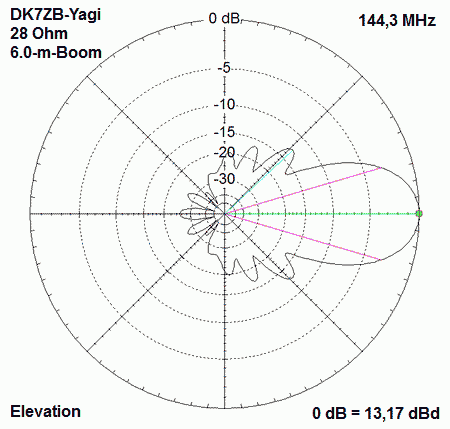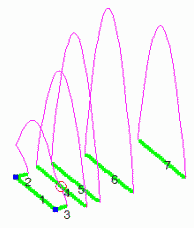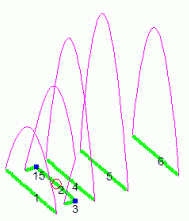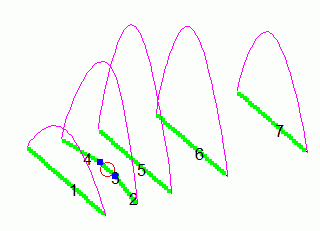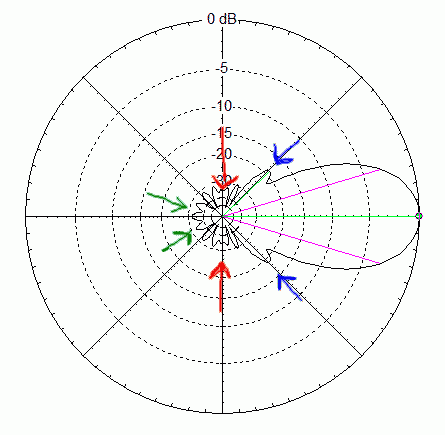|
As
it has become more to focus on the noise figure than on the gain of
Yagi-antennas I decided to develop some models with these fundamentals.
But
before introducing some of the new antennas we should look on the design
rules used for these Yagi types. The older DK7ZB-Yagis with 28-Ohm have
a higher gain but a bigger first side lobe than the new "low
noise" Yagis. In the 90’s I have introduced low impedance
12,5-Ohm-Yagis with a close spaced reflector for high F/B and F/R, but
the focus was not primary a high bandwidth. The focus was for extreme
high gain and high F/B. The types had only a length up to 1,5 lambda.
The reason was that I did not believe that long boom Yagis would have an
advantage with this concept. Meanwhile G0KSC has shown that it is
possible to use the 12,5-Ohm-design for excellent patterns and great
bandwidth. Here
is a short introduction for the different design principles and their
fundamentals. For the 28-Ohm-DK7ZB-Yagis read here:
Longyagi-principles Some
years ago YU7EF presented a new type of Yagis with the
"low-noise" principle. That means extreme reduced side lobes
for minimizing the receiving of unwanted signals ("noise").
Therefore he changed the travelling wave zone and the end zone of the
Yagi. He shortened the directors continuously; the last directors are
very short. But there are very low currents in the last directors, which
leads to less efficiency and some reduced gain. You cannot get it all!
The second YU7EF-principle is the 50-Ohm-direct feed, that means the
intrinsic impedance of the Yagi is 50 Ohm. The Yagis can be built with
open dipoles or with a 200-Ohm-folded dipole and a half wave balun. If
you want to know more, here is the website with a lot of models for
various bands: YU7EF Other
very impressive 50-Ohm-direct feed-Yagis with a complete different
design (FLOWA) and real 50-Ohm-AOWAs (Advanced Optimized Wideband
Antennas) are presented by
G4CQM
These
new DK7ZB-OWL-Yagis use the best compromise between three design principles: DK7ZB:
The 12,5-Ohm-Yagi design for high gain, easy matching and simple to
build open dipole with the well known and well proved DK7ZB-Match
or a 50-Ohm folded dipole for direct connection of a 50-Ohm-coax cable.
This is not an intrinsic 50-Ohm-direct feed, but the folded dipole is
used as a match element 12,5/50 Ohm. This was introduced in the 90’s
in some articles for the German Ham-Magazine "FUNKAMATEUR". YU7EF:
Director-chain for good suppressed of the side lobes in the elevation-
and azimuth-plane. But I have not extremely reduced the reactance -j X
for the directors as YU7EF does in his designs. The consequence is more
gain. Remember that you can get the same G/T with an extreme high gain
and moderate side lobes or reduced gain and extremely suppressed side
lobes. I prefer the first method, but this is discussible. G0KSC:
The extreme narrow spaced reflector and a close first director in the
driver cell for wide bandwidth (OWL). The lower gain with the
YU7EF-director chain can be compensated widely with the now slightly
longer travelling wave zone.
|


